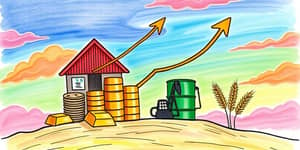
In an era defined by rapid change and unforeseen disruptions, organizations must go beyond reactive management. They need to ask “what if?” at every turn. Stress testing builds strategic resilience by probing weaknesses before they become crises.
From financial institutions bracing for market shocks to supply chains adapting to climate upheaval, scenario analysis offers a clear path forward. It lets leaders visualize adverse futures and design robust responses that protect value and mission.
Scenario analysis is the umbrella process by which a firm evaluates its performance under a suite of possible futures. It explores how shifts in economics, geopolitics, regulations, or natural disasters might transform outcomes.
Stress testing is a focused form of scenario analysis that targets extreme or adverse scenarios. It uncovers hidden weak points by simulating severe but plausible events, such as a 40% equity market plunge or a sudden interest rate spike.
Effective stress testing follows a systematic sequence. This methodology ensures thorough coverage and actionable insights:
Organizations can choose from multiple approaches to stress testing. Each method serves a unique purpose:
In the financial world, stress testing is often mandatory. It improves credit risk evaluation, guides capital buffers, and ensures compliance with regulations like the Dodd-Frank Act. Banks and credit unions routinely subject loan portfolios to +/–300 basis-point interest swings to test resilience.
Beyond finance, scenario analysis powers climate risk assessments, supply chain continuity plans, and cyber-resilience strategies. Energy producers map storm and temperature event impacts, while logistics firms model port closures or fuel-price shocks.
Adopting best practices ensures stress tests deliver maximum value. Leaders should:
Scenario analysis is evolving into a holistic risk management discipline. Climate resilience frameworks are becoming mandatory in many regions, pushing organizations to stress-test physical and transitional environmental risks together.
Supply chain disruptions, cyberattacks, and ESG concerns are now woven into mainstream stress tests. Cutting-edge firms integrate real-time data feeds and machine learning to generate dynamic scenarios that adapt to unfolding events.
As regulatory expectations rise, businesses that embrace scenario-based stress testing will enjoy a holistic risk management framework that not only safeguards assets but also fosters innovation and agile decision-making.
In an unpredictable world, waiting for crises to strike is a luxury no organization can afford. By mastering scenario analysis and stress testing, you can anticipate the effects of tail events and drive informed decision-making and strategic adjustments before disruption hits.
Start small—apply a single historical or hypothetical test to a core process—and expand your program over time. With a disciplined approach, you’ll transform uncertainty into opportunity and build the resilient enterprise of tomorrow.
References













